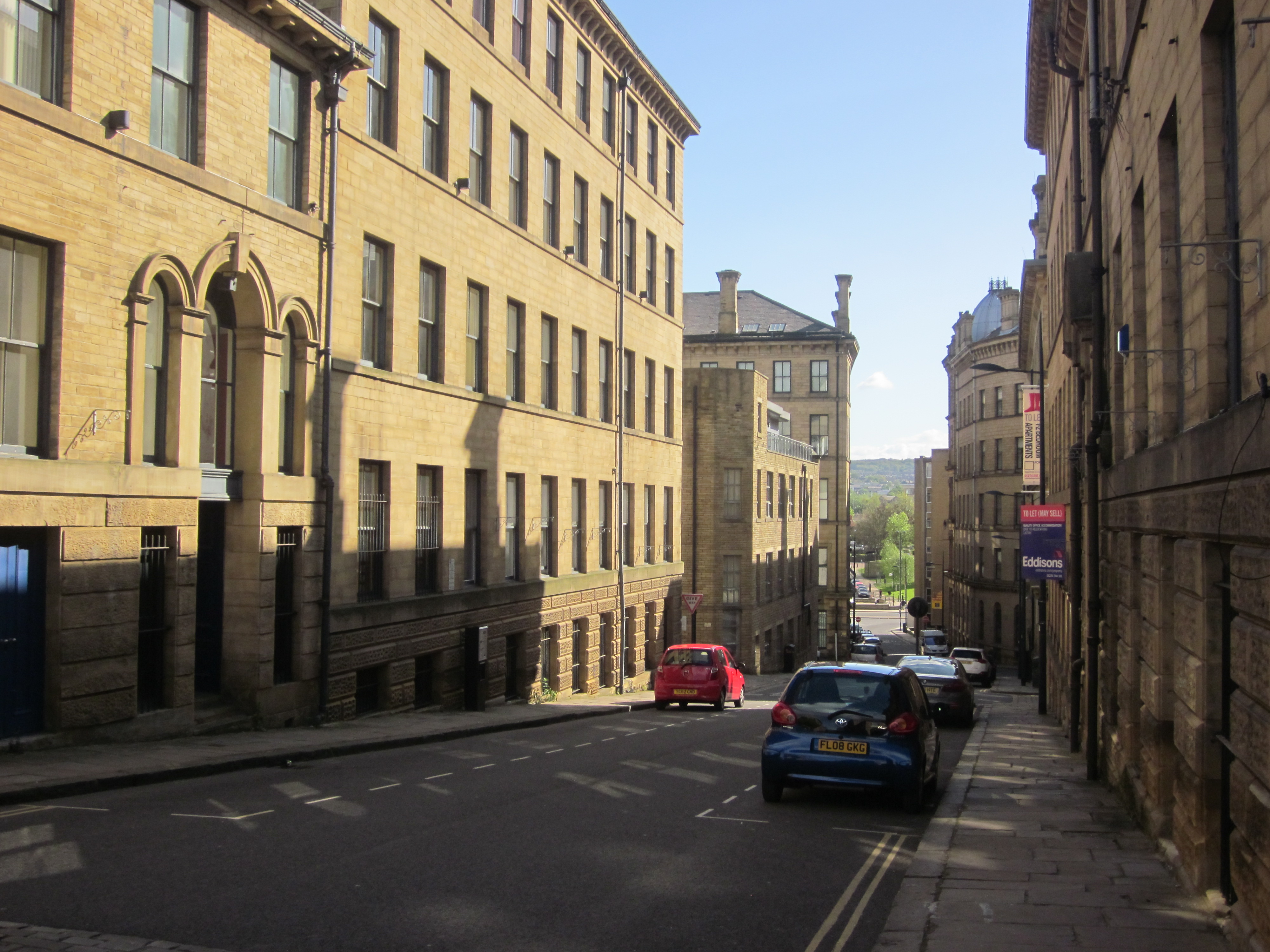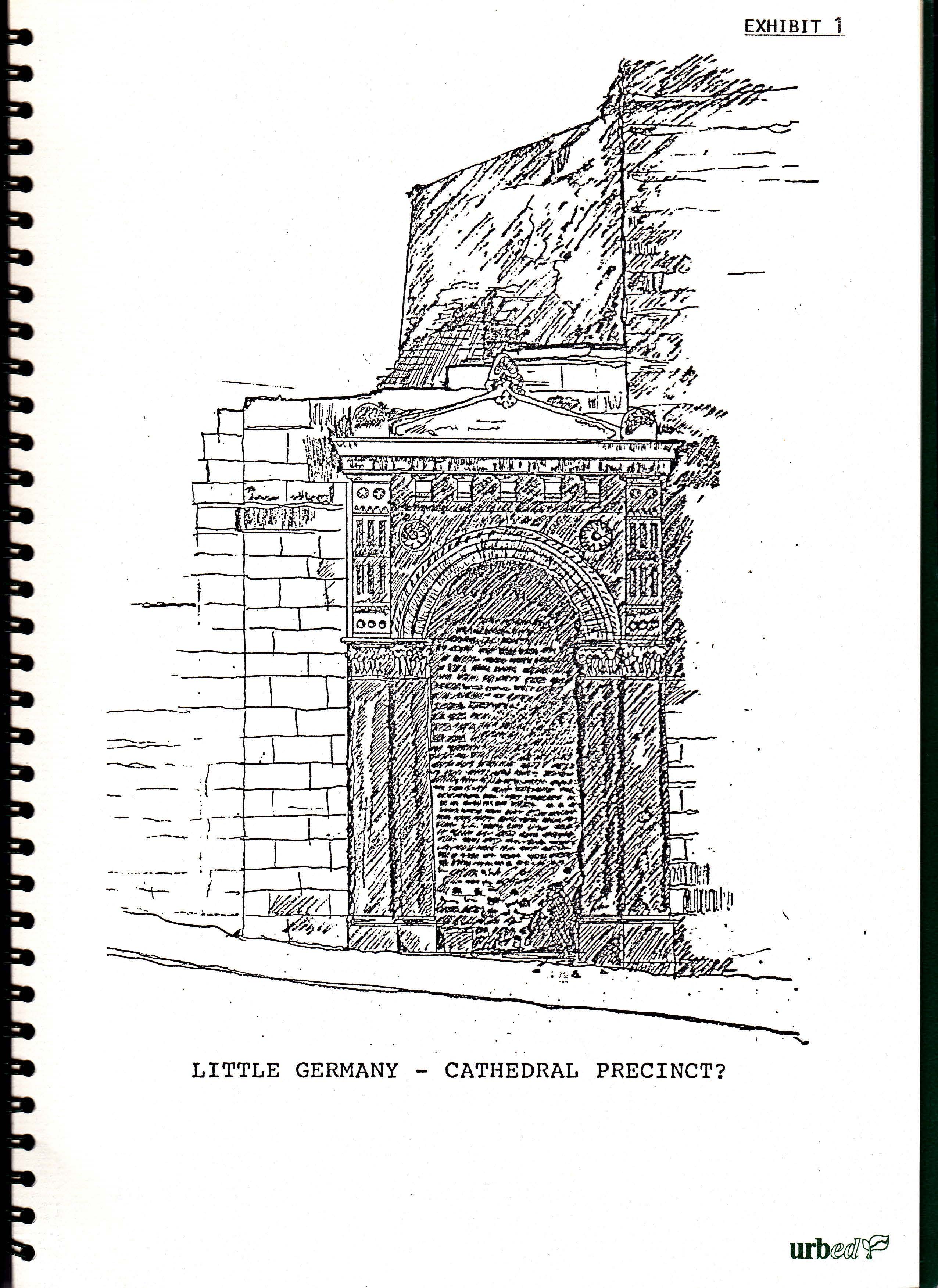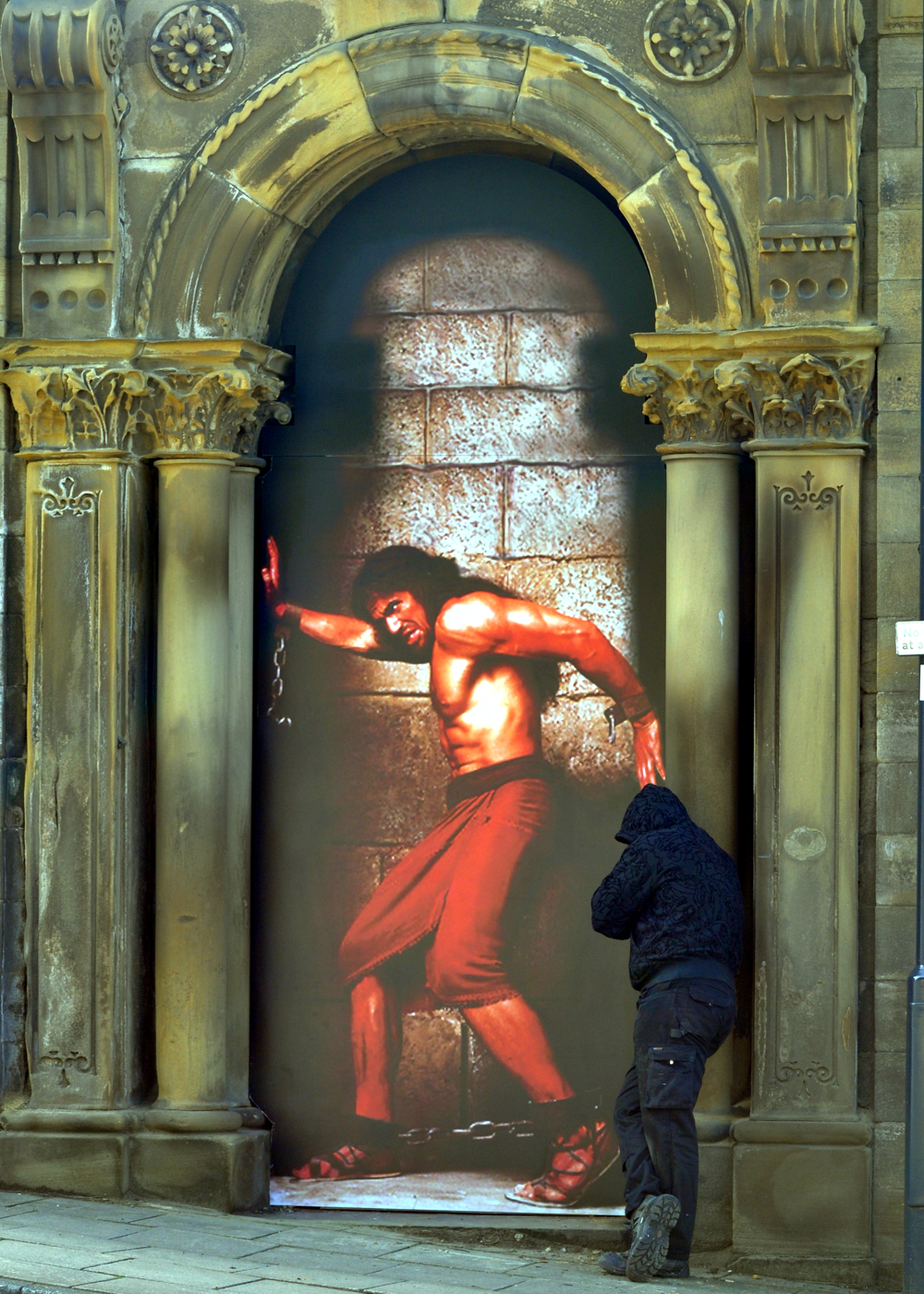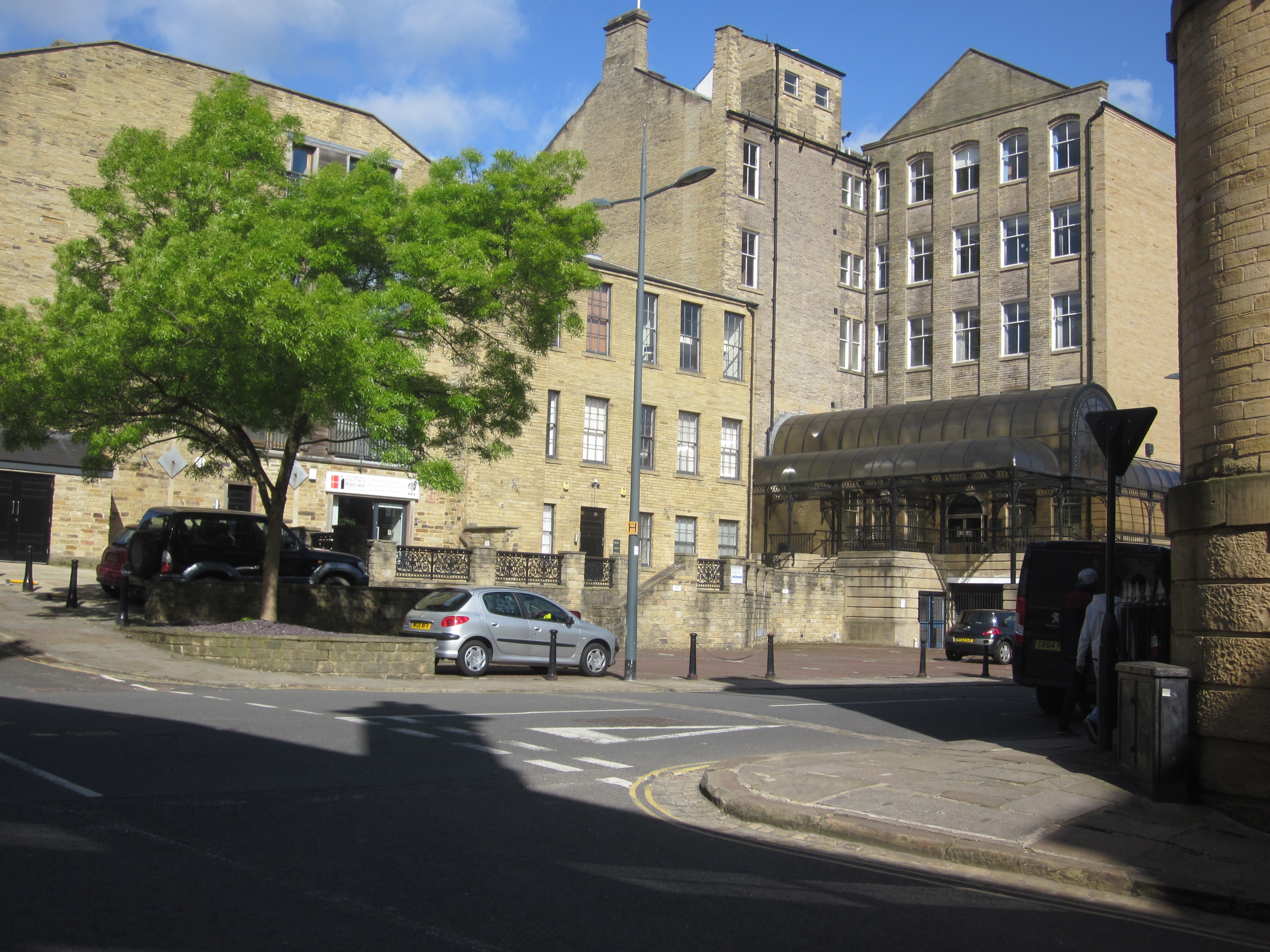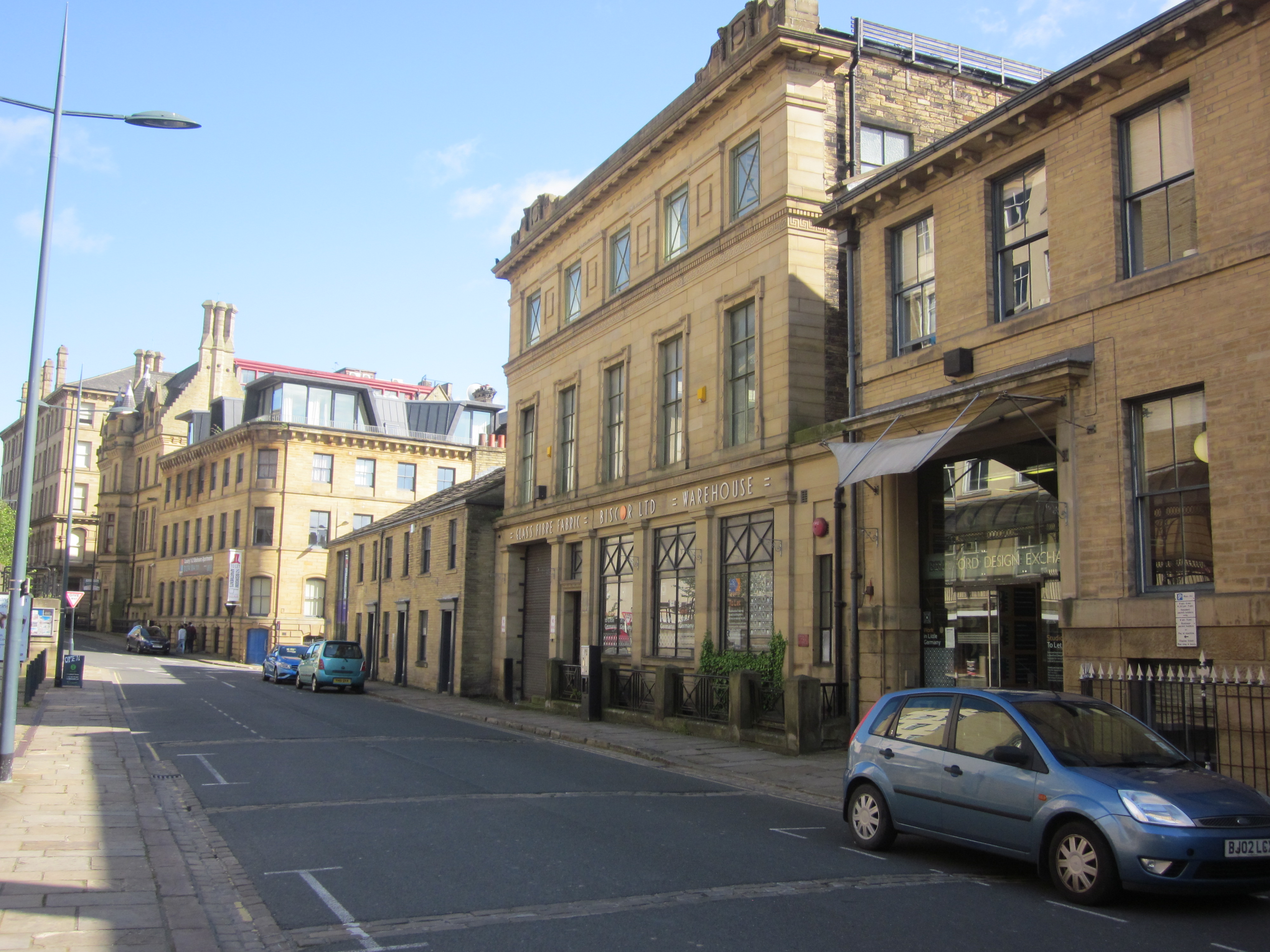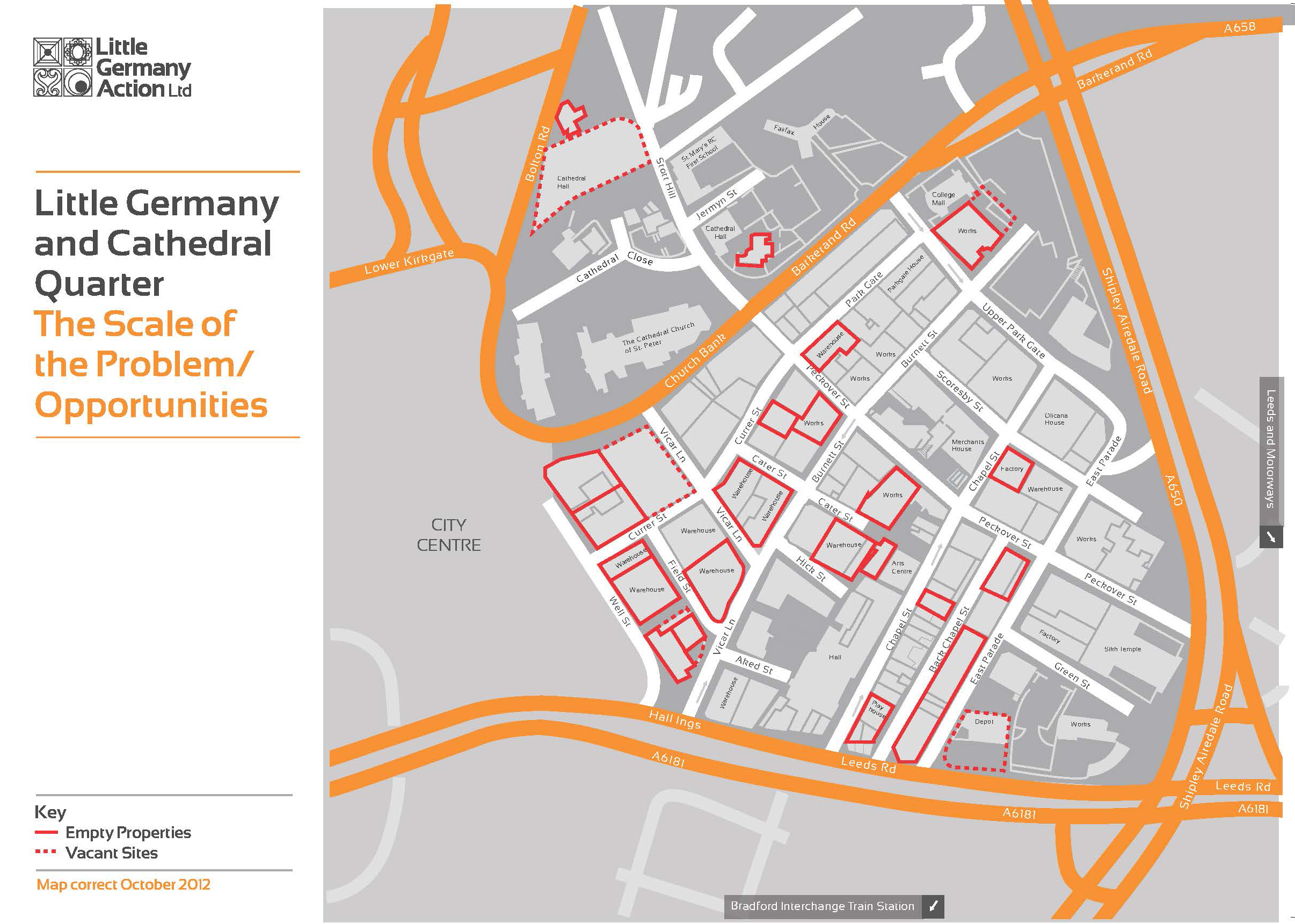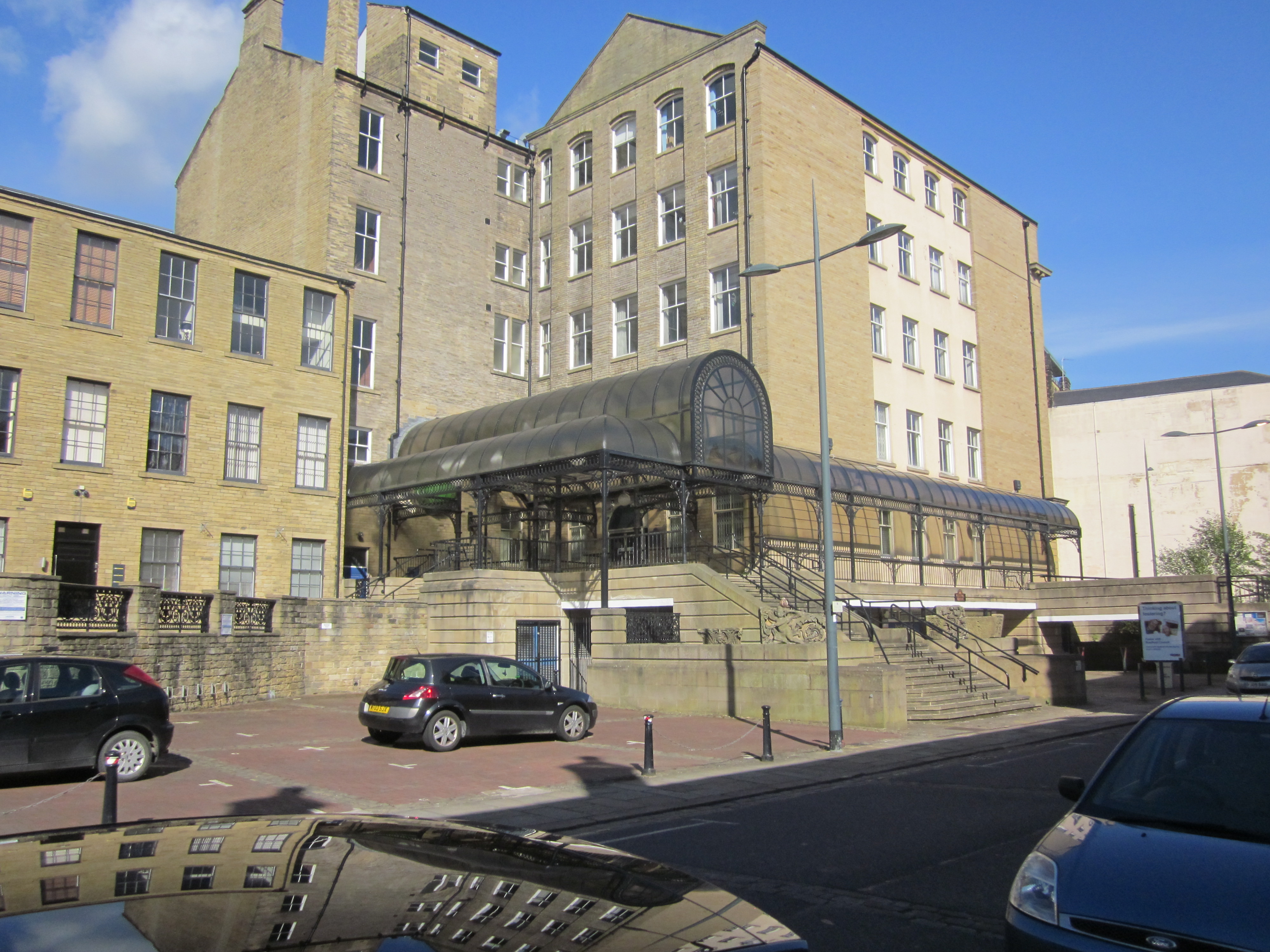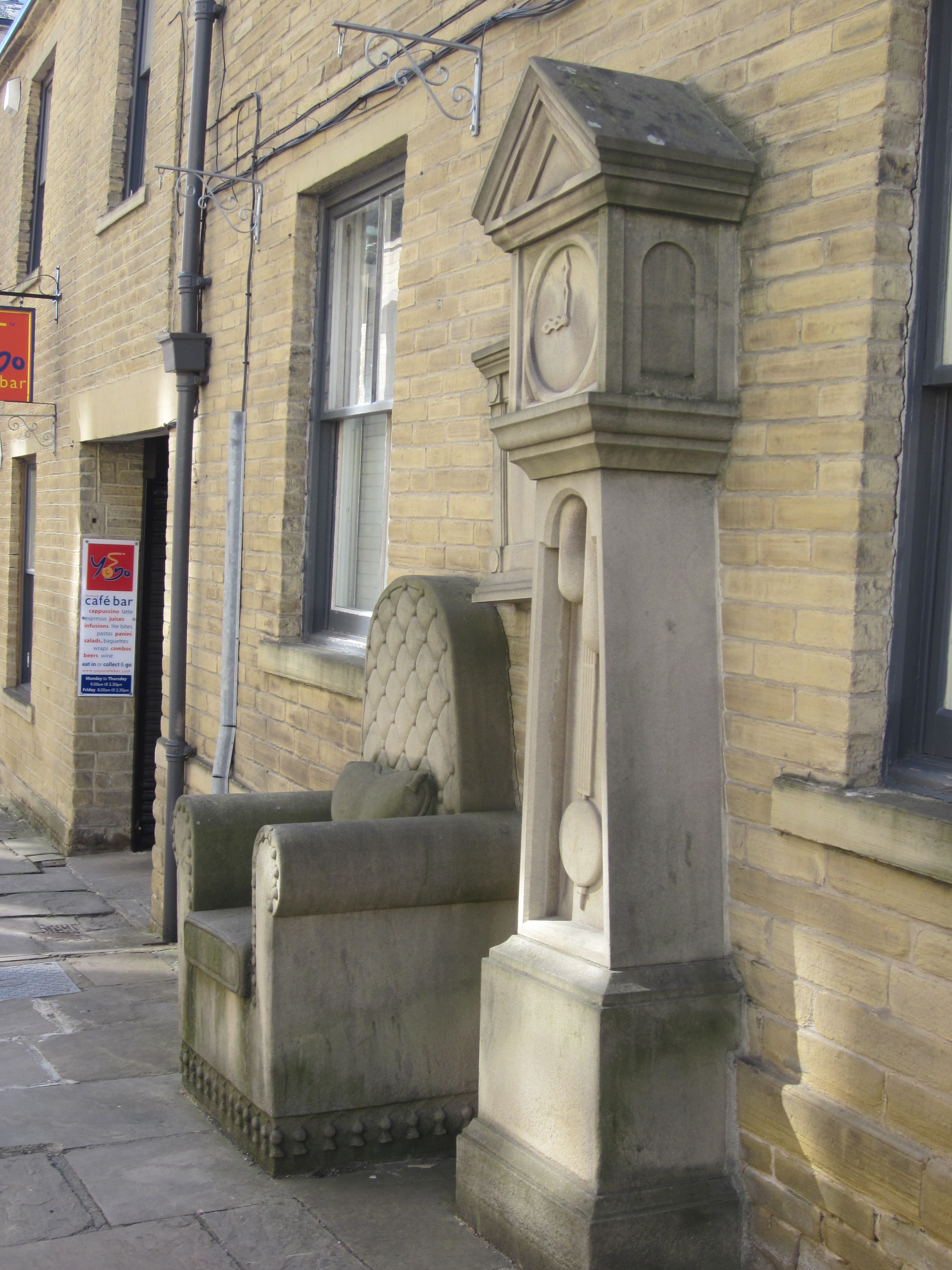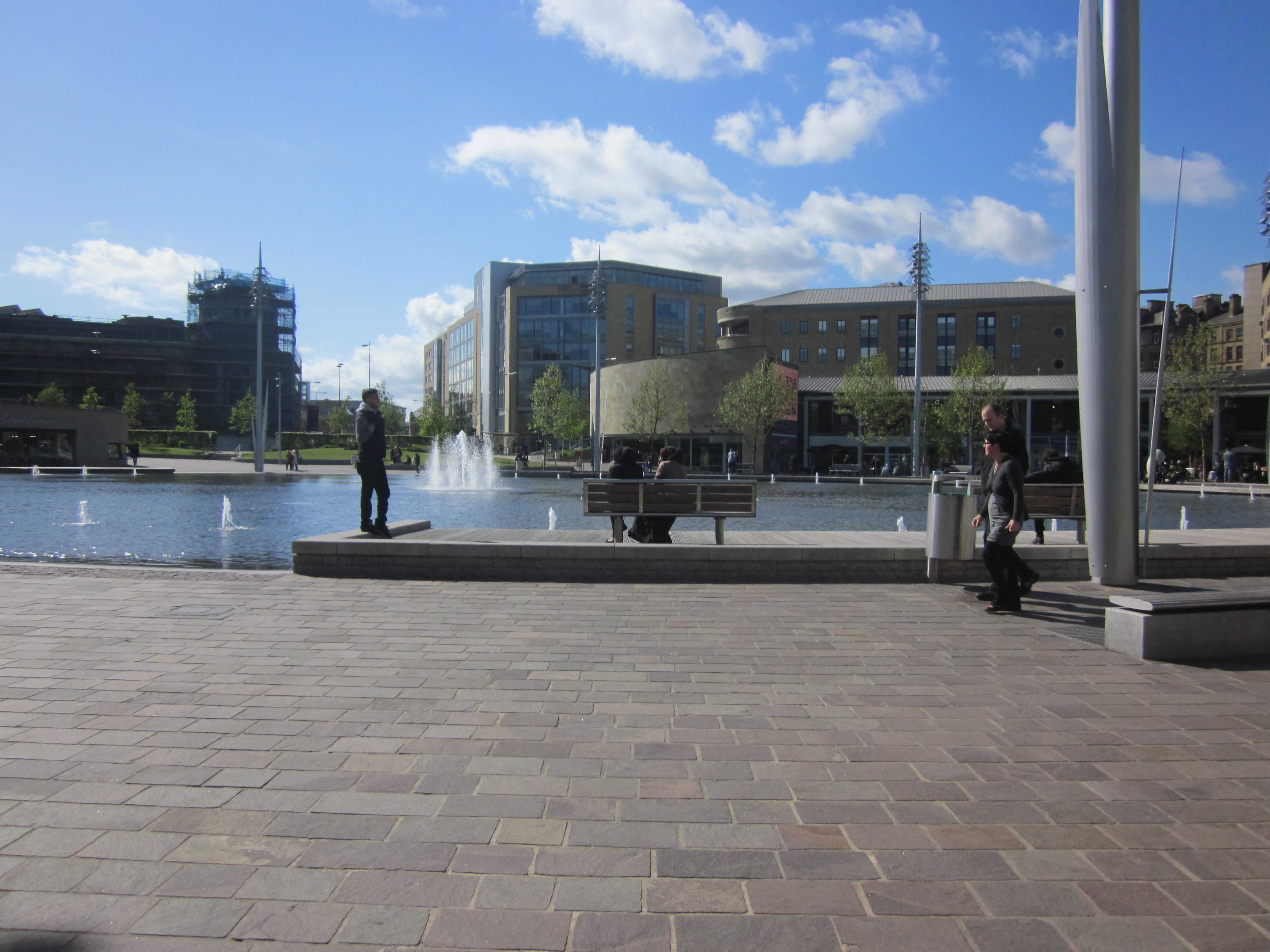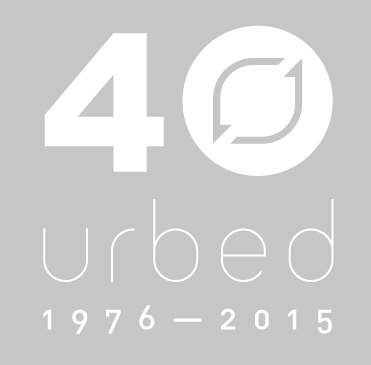SUCCESS OR FAILURE?
Walking round Bradford’s historic ‘Merchant Quarter’ some 30 years after URBED first came up with a strategy for regeneration, and listening to some of those who had worked on the area, I was struck by the importance of getting the timing right, and of funding ongoing management. Of course, as David Rudlin’s pictures showed, the area has been physically saved. But has it been regenerated?
Sleeping beauty
In an area of some 20 acres, there is over a million square feet of space. Half of the space and a third of the buildings are currently empty according to Dave West, who after 25 years working for the Council has set up a social enterprise to promote the area’s revival. He lives in a home in the area that is worth less than what he paid for it in 2001. For despite some imaginative conversions and new build schemes Little Germany has not taken off as the creative place to live that we imagined. Nor does it hum with bars, restaurants and galleries.
The reasons lie, as Marc Cole explained, in the failure of Bradford to resolve the wider problems of its city centre – (although there are now real signs of improvement). These include a divided community that does not properly ‘own’ its centre, grand schemes such as the Alsop Masterplan that could never be implemented and delays in the Westfield Shopping Centre which was just a hole in the ground for ten years. Progress has been made, and the success of the Mirror Pool in City Park – the one positive legacy of the Alsop plan – has been a major boost for the city as will be the completion of the Westfield Centre later this year. However too much time has been spent fighting battles such as the demolition of the Odeon and too much emphasis put on the apartment market which provided only average quality homes and very little supporting infrastructure . The city has not made the most of the fact that it has some of the best Asian restaurants in the country preferring to brand its Curry Mile the ‘World Mile’ to downplay its Asian connections. The City that was once at the heart of the Leeds/Bradford conurbation but is now over-shadowed by Leeds, and feels like another world waiting to be discovered.
Bradford has been the subject of many forms of regeneration, most recently the Urban Regeneration Company. However rather than embracing the resources that a URC brought to the city, as other cities have done, Bradford spent its time complaining about its imposition. We always say that regeneration takes a generation but Bradford is now on to its third generation of regeneration professions and still it resists.
Little Germany Action
Our original strategy was very concise. It sought to change the area’s image by creating a temporary new square which then was the site of Bradford’s first community festival. The festival grew to become the largest in the country at a time in the late 1980s following the opening of the National Media Museum when Bradford as seen as a success story, which was why David Rudlin accepted the job of managing Little Germany Action. As Dusty Rhodes pointed out, this success was the result of a city that harnessing the energy of its thousands of creative people. Dave West thought the best times were when URBED was involved, which included the delivery of Festival Square, Merchant’s House, the Bradford Design Exchange, environmental improvements, sculpture competitions and scores of events. In the mid 1990s the area was promoted as an Urban Village and by the end of the decade the occupancy levels of Little Germany had been double and some £15 million had been invested. Today, unfortunately the occupancy levels are back to the levels in the late 1980s and despite all the hard work and investment the area does not deliver its potential..
As Councillor Simon Cooke noted most of the investment depended on public money which is now in very short supply and while Dave West’s work on ongoing regeneration is to be welcomed he needs resources. There are a range of possible models, as Kate Dickson showed, from Birmingham’s Jewellery Quarter, where people still work, or Nottingham’s Lace Market which buzzes at night, to European models that attract families into old industrial quarters. As Dusty said, the problem would have been solved in the 1980s if his offer to fill Little Germany with Bradford’s creative’s had been taken up. There remain plenty of energetic and creative people in the area and this could still be done. So what needs to be done next?
Dave West believes it’s all about creating the ‘right mix’ – quality jobs, quality city living, the creative arts, supporting infrastructure and connectivity within the high quality environment of Little Germany – ie a living, working, lively special place – alive with pride and shared ownership. To achieve this requires effort, imagination and co-operation overarched with determination and consistency of approach. It can be done!
Nigel Grizzard, who helped start the original festival, put his finger on the problems for inaction:
‘The reasons are many, but City Centre living in Bradford is not in vogue, as there are no jobs in the City Centre in the way you would find them in Leeds or Manchester – no architects, designers etc., so people live in the nearby suburbs where housing is good and relatively cheap eg Heaton.The only major regeneration building regeneration schemes in Bradford that have succeeded are Salts Mill, the adjacent New Mill and Victoria Mill all in Saltaire, this is because individuals drove them. The answer for Little Germany, as Dusty said, is bring in artists etc to get life back into Peckover Street where the Design Exchange is, reinvigorate the Design Exchange and Festival Square and buy out the landlords of the empty property who are the dead hands in the process.’
Towards a shared vision
With the opening of the giant Westfield shopping centre in Bradford’s Broadway this Autumn, the physical hole will have been filled, and there is a once in a lifetime chance of attracting new interest in Little Germany next door. But without concerted action, the opportunity will be missed. There is a need for conserted action but also a little imagination from the council (For example the artist who designed the beautiful new street signs in Little Germany had to put them up himself as they did not conform to the standard Council system). This is ironic given the seeming lack of signage tell you where Little Germany is.
How different from the history of a city like Leipzig which has a very similar history to Bradford and yet now competes with Berlin as Germany’s creative centre thanks to low rents and artists taking over old textile mills. Or go to Roubaix, another old textile town next to Lille, which converted its old swimming baths into La Piscine, the most visited gallery apart from the Louvre, and where cultural life has taken off in ways that engage its largely immigrant population. I also was reminded of what has been achieved in the mills of the Stroud Valleys thanks to the original idea of a ‘string of pearls’, a growing number of festivals, and lots of creative entrepreneurs.
In the city of David Hockney, and with a very good university on the edge of the city centre, surely the empty spaces should once again display beautiful products or provide space to live and work? Little Germany’s fine cobbled streets are ideal for making films or putting on plays, so why should Oxford be the only British city to feature in endless television crime series? Bradford is the world’s first Unesco City of Film – indeed the City of Film office is located in Little Germany! However, there is no shortage of ‘to let’ signs, and some of the owners must surely welcome ‘meanwhile uses’? And there are plenty of people to train for a service economy that could benefit from a ‘warm Yorkshire welcome’, as well as the ability to produce and serve tasty food in exotic surroundings. So it looks as if a task force for Little Germany is needed to build on the achievement of launching the first Local Heritage Partnership.
The last of the URBED 40 events will be taking place in November in Bankside on London’s South Bank, where we helped launch one of the first Business Improvement Districts, and which has been particularly successful in promoting this historic area. As well as visions and masterplans, which may gather dust, we need to mobilise local people who care about their heritage. We must ensure that the old spaces do not just become museum pieces, but help make a better world and bridge the gap between past and future.
Nicholas Falk
May 22 2015
